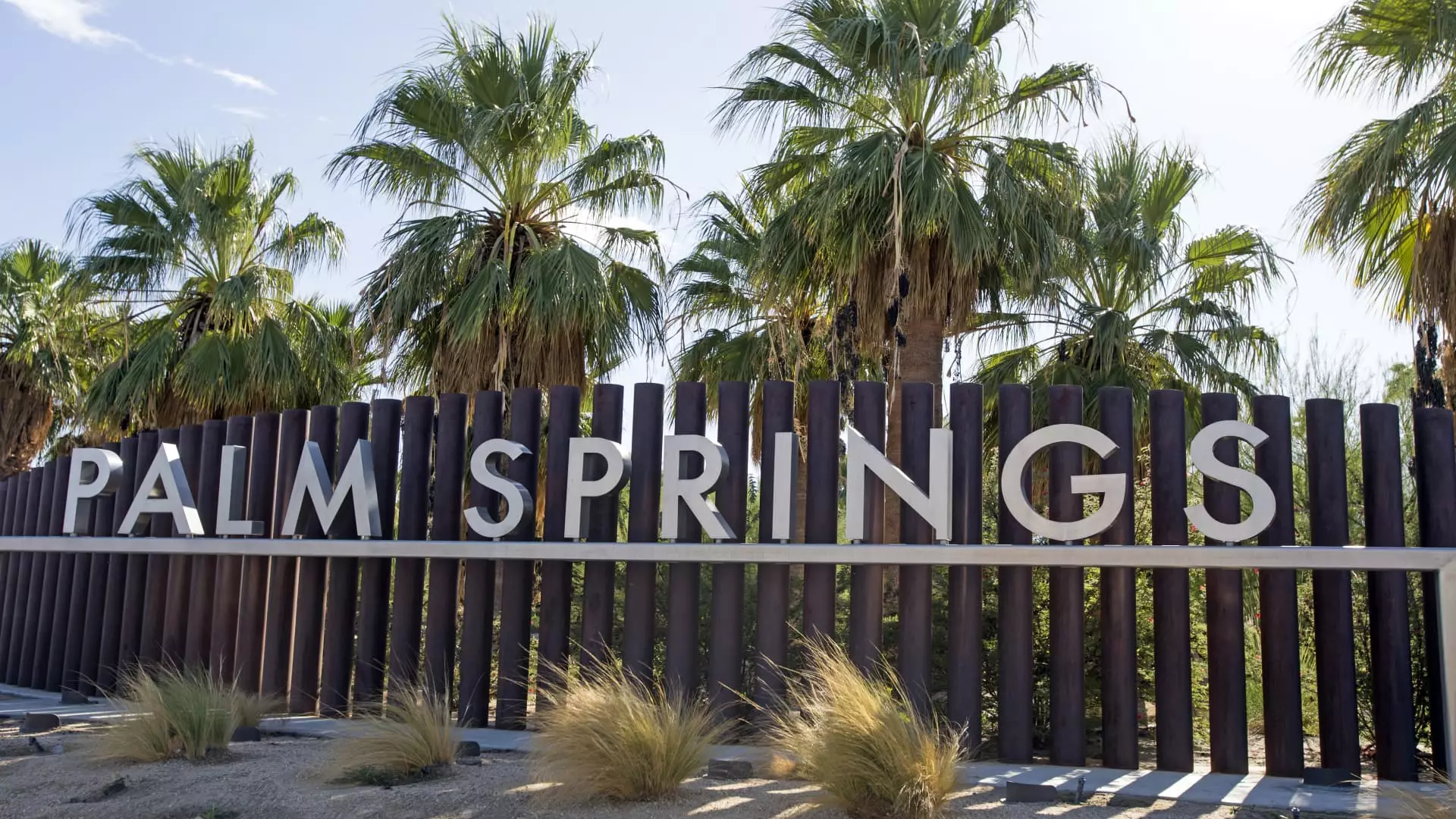On a seemingly ordinary day in Palm Springs, California, a horrifying explosion shattered the calm, leaving one person dead and five others injured. The authorities have classified this devastating act as an “intentional act of violence,” implying a darker motive lurking beneath the surface. As we grapple with the shockwaves from this tragic event, it’s crucial to delve into the implications of such violent outbursts in our society, reflecting on a culture that too often lets desperation drive individuals to horrific acts.
Just before 11 a.m., the blast rocked 1199 North Indian Canyon Drive, an area housing multiple medical facilities, including a fertility clinic. Reports suggest that the explosion was powerful enough to damage several nearby buildings, leaving a scene of chaos and fear in its wake. Palm Springs Police Chief Andy Mills described the “blast field” as stretching blocks, highlighting the indiscriminate nature of this violence. With the FBI and the Bureau of Alcohol, Tobacco, Firearms and Explosives launching investigations, it seems society may need to brace itself for more grim truths about our communal struggles.
Victims of a Fractured Society
The deadliness of the incident raises questions about the motivations behind targeting a fertility clinic. Was the explosion a direct attack on reproductive health, an arena fraught with ideological fervor? The inclination to harm places associated with life and hope speaks volumes about an undercurrent of anti-choice violence still lurking beneath a facade of civility. Despite assurances from the American Reproductive Centers (ARC) that they sustained no damage to their operations, the psychological toll on staff and patients cannot be overlooked. The toll violence takes often spreads beyond physical injuries to emotional and psychological scars that can last a lifetime.
Moreover, in a climate where reproductive rights are hotly debated, this incident could catalyze further tension, stoking division among women’s rights advocates and their opposition. The rhetoric from U.S. Attorney General Pamela Bondi, condemning the act of violence as “unforgivable,” highlights an essential truth: such assaults are not merely crimes but a profound reflection of societal discord concerning women, autonomy, and medical care. This siege on women’s health, cloaked in violence, should serve as a rallying cry for advocates and communities alike.
Media Manipulation and the Narrative of Fear
In our digital era, the immediate dissemination of information can amplify fear and speculation. Videos circulating on social media captured the chaotic aftermath of the explosion, showcasing shattered windows and heroic firefighters battling the flames. Yet, as we consume this content, it’s vital to scrutinize how narratives are constructed in times of crisis. Media portrayals often sensationalize events, contributing to a climate of fear and distrust, which may exacerbate existing divisions within society.
This incident could easily fall prey to becoming a renewed focal point for debates around domestic terrorism and political violence, contributing to the toxic atmosphere engulfing discussions around gender, rights, and health care. As consumers of news, we must resist the urge to allow one tragic event to blur our understanding of complex societal issues. It is essential to approach these developments critically and not let fear dictate our collective response.
The Role of Community in Healing and Rebuilding
The aftermath of this explosion signals more than just a call for justice; it necessitates a community-focused response. The residents of Palm Springs must rally around the affected, showing solidarity and support. Healing in the wake of violence presents an opportunity for communities to engage in meaningful dialogue about compassion, understanding, and support for those who thrive in the murky waters of struggle and despair.
Local leaders, health care providers, and community activists should employ this incident as a pivot point for broader conversations on reproductive rights, mental health care access, and the structural inequalities that push individuals toward acts of violence. The narrative shouldn’t merely be about the tragic explosion but rather the societal failures that may have led to such desperation.
In closing, while no one could have anticipated the horrific events that unfolded in Palm Springs, we owe it to the victims and our collective conscience to confront the issues that drive such violent acts. A culture of understanding, compassion, and community engagement stands as our best antidote to the fear and division that such senseless violence seeks to breed.


Leave a Reply